Hey there, fellow DIYers! So, remember I shared my experience with the Wagner 5000 and you know how much I loved it. Well, fast forward to this month, and I got my hands on the new Wagner Flexio 2000 paint sprayer. Let me share my experience with this Flexio model.
If you’ve ever been in the shoes of a homeowner facing a painting project, you know the struggle. Sometimes, hiring pros just isn’t in the budget, right? That’s where brands like Wagner come in, offering tools that strike a balance between pro-level quality and affordability. And let me tell you, the Flexio 2000? It’s all about that sweet spot.
Now, I’ve spent countless hours with HVLP sprayers, including other models from the Wagner Flexio series. So when I say I’ve got insights, I mean it. This Wagner Flexio 2000 review isn’t just about specs and features—it’s a real-talk discussion about who can benefit most from this sprayer and how to get the most out of it. Whether you’re a seasoned DIYer or just dipping your toes into home projects, understanding how to use the Flexio 2000 can take your painting game to a whole new level.
The Wagner Flexio 2000 HVLP sprayer is an innovative painting tool designed to provide both professionals and DIY enthusiasts with a convenient and efficient way to tackle a variety of painting projects. Unlike traditional airless sprayers, the Flexio 2000 utilizes High Volume Low Pressure (HVLP) technology, which results in a finer finish and less overspray. With its onboard air turbine, this sprayer eliminates the need for a separate air compressor, making it a portable and user-friendly option for both indoor and outdoor painting tasks.
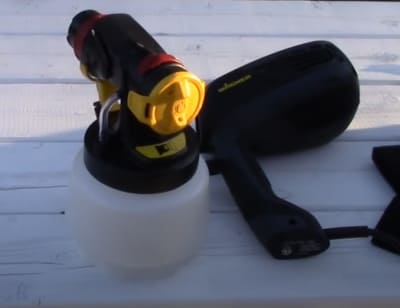
Table of Contents
- Wagner Flexio 2000 Paint Sprayer Parts and Functions
- 1. X-Boost Power Dial:
- 2. iSpray Nozzle:
- 3. 1.5 Qt. Paint Cup:
- 4. Material Flow Control:
- 5. Spray Fan Width Switch:
- 6. Air Cap/Nozzle/Spray Tip:
- 7. Stage Trigger:
- 8. The Paint Suction Tube
- 9. Air Valve Tube
- My Detail Analysis Of the Wagner Flexio 2000 HVLP Paint Sprayer:
- HVLP Technology:
- My thoughts On Wagner Flexio 2000 Sprayer
- Best Uses of the Wagner Flexio 2000:
- What I Like & Don’t Like about Wagner Flexio 2000:
- How to Use the Wagner Flexio 2000?
- Setup:
- Thinning Paint:
- Spray Technique:
- Cleaning Process:
- Troubleshooting and Adjustments:
- Conclusion:
- Rosalie Sanchez
Wagner Flexio 2000 Paint Sprayer Parts and Functions
The Flexio 2000 consists of two main components: the rear turbine and the front assembly. Let’s discuss in detail why you should buy Wagner Flexio 2000 sprayer!
1. X-Boost Power Dial:

Firstly, the X-Boost dial allows you to adjust the paint flow according to your preferences and the requirements of your project. This means you have the power to control the amount of paint being sprayed, giving you more precision and efficiency.
Secondly, by regulating the paint flow, the X-Boost dial helps you minimize wastage. You’ll use just the right amount of paint needed for each pass, avoiding excess buildup and ensuring a more economical painting process. This not only saves you money by reducing paint consumption but also contributes to a cleaner and more environmentally friendly approach to painting.
TIP:
This knob allows you to adjust the turbine’s power output, with high power for thicker materials like enamels and low power for thinner paints and stains.
2. iSpray Nozzle:
I feel that the iSpray Nozzle in the Wagner 2000 sprayer is like having a magic wand for painting. It’s designed to cover medium size projects quickly and evenly, saving you time and effort.
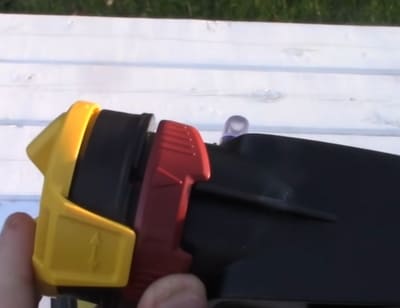
With its wide spray pattern, you can coat cabinets and furniture with ease, achieving professional-looking results in a fraction of the time it would take with a brush or roller.
But it’s not just about speed—it’s also about versatility. The iSpray Nozzle can handle a variety of coatings, from thick latex paints to thin stains, giving you the freedom to tackle different projects with confidence.
3. 1.5 Qt. Paint Cup:
I tested its paint cup capacity and it can cover a small to medium area in a single fill, reducing the need for frequent refills.
4. Material Flow Control:
The flow knob regulates the amount of paint or stain delivered, ensuring optimal coverage for different types of projects.
5. Spray Fan Width Switch:
The switch adjusts the width of the spray fan, allowing for precise control over the painting pattern. (I often set the switch first!)
6. Air Cap/Nozzle/Spray Tip:
The air cap is where the air meets the paint, ensuring proper atomization and a smooth spray pattern.
7. Stage Trigger:
The 2 Stage Trigger in this FLexio sprayer provides precise control over paint application. With a gentle squeeze, you can start with a light spray for detailed work, then increase pressure for broader coverage. This feature ensures accurate results and efficient painting, whether you’re tackling small touch-ups or large projects.
8. The Paint Suction Tube
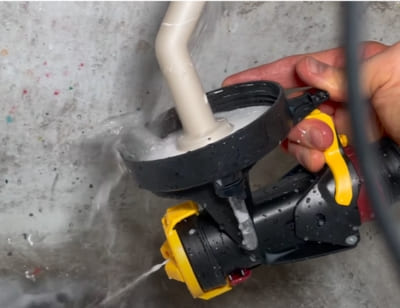
The Wagner 2000 simplifies your painting process by allowing direct access to paint without constant refills. It efficiently draws paint from the container, ensuring uninterrupted workflow. This feature saves time and effort, making painting tasks more convenient and seamless.
9. Air Valve Tube
The Air Valve Tube in the Wagner 2000 controls airflow for precise paint atomization, ensuring consistent coverage. Adjusting this tube enables customization of spray performance to match project requirements.
My Detail Analysis Of the Wagner Flexio 2000 HVLP Paint Sprayer:

In my opinion, the Wagner Flexio 2000 is a homeowner-grade HVLP (High Volume Low Pressure) paint sprayer equipped with an onboard air turbine, eliminating the need for a separate air compressor. This feature makes it convenient and accessible for DIY experts and homeowners looking to tackle various painting projects around the house.
HVLP Technology:
HVLP stands for High Volume Low Pressure. This technology is characterized by the delivery of a high volume of air at low pressure, typically around 10 psi. Unlike airless sprayers that operate at much higher pressures (around 2000-3000 psi), HVLP sprayers offer several advantages, including reduced overspray, improved paint adhesion, and better atomization for a smoother finish.
My thoughts On Wagner Flexio 2000 Sprayer
Wagner Flexio Models Comparison: If you already have a Wagner Flexio 2000 or a similar model like the 3000 or 5000, you’ll notice that many of the features are quite similar across these models.
These sprayers are great for indoor projects like painting kitchen cabinets, doors, trim, windows, and furniture as I mentioned above. But if you’re thinking about tackling exterior painting, I’d advise against it. I would not recommend it for interior ceilings and walls: Why?
Well, exterior paint tends to be thicker, meaning you’d have to thin it out a lot, which could mess with the paint’s quality. Plus, these sprayers are pretty slow, handling only a quart and a half of paint at a time. That’s nothing compared to the 20 to 50 gallons you might need for a typical exterior job. For big outdoor projects, you’re better off with something like the Graco Magnum X5, which can handle larger amounts of paint more efficiently.
Here’s the trick: if you’re using paints like Insulax, bare alkyd enamel, or Benjamin Moore Advanced (which, by the way, is my favorite), make sure to thin them down by about 20%. This helps the sprayer work its magic, atomizing the paint better and giving you a better result.
Best Uses of the Wagner Flexio 2000:
The Wagner Flexio 2000 is well-suited for a range of indoor painting tasks, including kitchen cabinets, doors, trim, windows, and furniture. However, it’s not recommended for exterior painting or large-scale projects due to its slower operation and limitations with thicker exterior paints.
You can learn more about Flexio series from its official website.
What I Like & Don’t Like about Wagner Flexio 2000:
Pros: I really like that it’s priced affordably and that it comes with an onboard air turbine, so I don’t have to buy a separate compressor. Setting it up and cleaning it afterward is a easy enough.
Cons: On the downside, it’s a bit heavy to move around, and it’s not the best for outdoor paints. Also, the noise from the onboard air turbine can be a bit bothersome, and it’s not as fast as some other sprayers I’ve used.
How to Use the Wagner Flexio 2000?
Setup:
The sprayer consists of two main parts – the air turbine and handle, and the spray gun assembly. Adjust settings such as fluid control, spray fan width, and spray tip orientation based on the project requirements.
Thinning Paint:
I suggest you to thin down paint, especially latex enamels, by around 20% is recommended for optimal performance and atomization.
Spray Technique:
Maintain a consistent 50% overlap while spraying, start with a low fluid setting, and gradually increase as needed.
Cleaning Process:
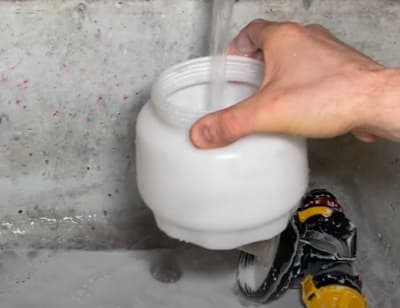
- Disassemble the sprayer components after each use.
- Clean thoroughly with water, paying special attention to the spray tip and fluid passages.
- Flush water through the system to remove any residual paint and ensure proper functioning for future use.
Troubleshooting and Adjustments:
- I often start with the fluid control set to the lowest setting and adjust as needed for the desired flow.
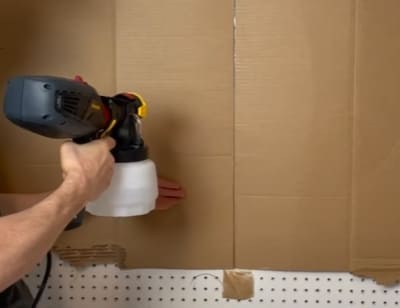
2. I suggest you to test spray on cardboard to adjust settings for optimal atomization.
3. As per my experience, thicker paints may require additional thinning to prevent splattering or uneven coverage.
Conclusion:
I recommend Wagner Flexio 2000 HVLP sprayer, a reliable and budget-friendly option for various painting projects around the home. This Wagner Flexio model is praised for its ease of use, making it suitable for small to medium-sized painting projects. However, I am not suggesting it for large-scale or professional projects.
Overall, Our Wagner Flexio 2000 review guide provides valuable insights for individuals who already own or are considering purchasing the Wagner Flexio 2000 HVLP sprayer. It covers everything from setup to cleanup, ensuring users can achieve professional results with their painting projects.

Rosalie Sanchez
DIY enthusiast with years of experience in home decor and home improvement. With a passion for educating consumers about DIY projects. Every time, I work with our painting professionals to provide you with the best painting product reviews and how-to advice. You can follow me on Facebook.


